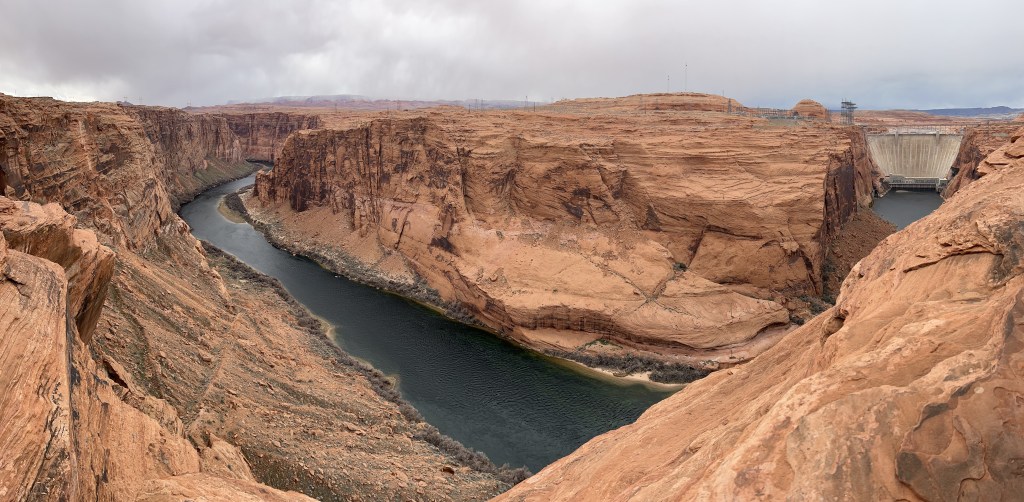
Like most people who travel through the crossroads of Page, I paid $10, walked 3/4 of a mile and took a picture of Horseshoe Bend. It’s an easy photo, especially around 2:30 pm, with the sun shining down over your left shoulder onto the deep oxbow canyon below. On a clear day the blue sky reflects in the river, and the height of the overlook makes a photo idiot-proof, easily framing the river bend from cliff to cliff and from horizon to bottom’s edge. Even I, a mediocre photographer at best, got the shot I dreamed about. But instead, I decided to show you the uglier view above.
“a curious ensemble of wonderful features
John Wesley Powell, explorer
—carved walls, royal arches, glens, alcove gulches, mounds and monuments.
From which of these features shall we select a name?
We decide to call it Glen Canyon.”
When John Wesley Powell first explored this canyon in 1869, he and his crew were amazed by the varied beauty of the place. Above all the impressive geologic features, they decided the best part of the canyon were the narrow green glens, teeming with specialized flowers, birds and animals. Less than 100 years later in 1963, the beautiful glens of Glen Canyon were drowned, and in a cruel irony, the temporary bathtub was named “Lake Powell” after the explorer & geologist who most loved the living glens.
In retrospect, Glen Canyon Dam should never have been built. Lake Powell, above the dam at right, is a sad collection of marooned boats with ramps and docks that don’t reach the water, so most of the fossil-fuel burning jet skis, power boats, fishing boats and houseboats can’t keep polluting here anymore. The “lake” is more of a stagnant segment of river with bleached canyon walls and a bathtub ring. Due to low water, neither the ferry at Hall’s Crossing nor the tour boats to Rainbow Bridge run anymore. When the water drops another 30 feet—later this year?—the massive hydroelectric towers above the dam to the left won’t have any electricity to deliver.
Engineers no doubt consider the dam to be a victim of its own success, drawing too many people to Arizona with cheap electricity and “plentiful” water. Economists likely consider the dam a fiasco, since all the expensive infrastructure is practically useless now, long before returning on the investment. Common sense says that dam or not, you can’t have your river and drink it too. Environmentalists, who opposed the dam from the beginning, say “we told you so”. Climate scientists say, “it’s going to get worse”.
After all the park is desert—mostly remote canyons in Utah—, and the river isn’t big enough for people to waste. I drive past a lot of busy car washes and gas stations with patches of grass, while the shiny vehicles burn carbon and diminish the mountain snowpack. On my way southeast, I drove through Gilbert, Chandler & Ocotillo neighborhoods near Phoenix. While riff-raff like me aren’t allowed past the walls, gates and guards, satellite maps show private golf courses, lakes, and homes on private islands, all in the desert. It’s tragic to see glimpses of all that water wasted, while our national recreation areas run dry.

